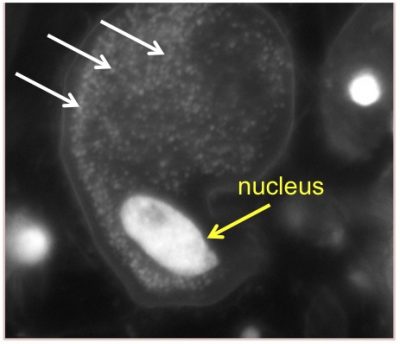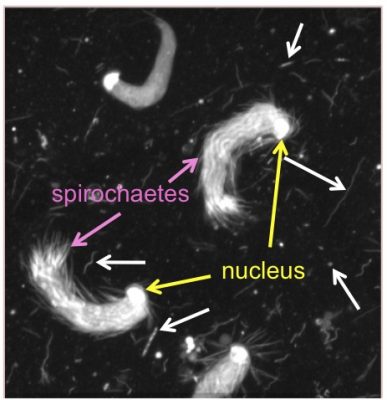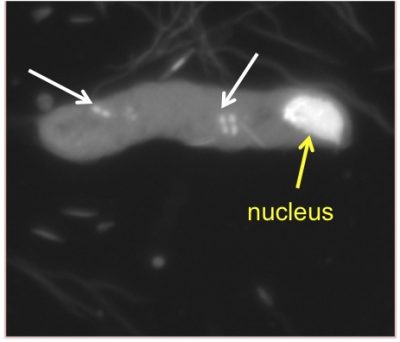Termites depend upon the microbes in their gut or digestive tract to digest the complex sugars in wood into simpler molecules that they can use for food. Cellulose is a major sugar in wood and it is broken down in the hindgut of the termite by microbes into molecules called short-chain fatty acids. Acetic acid is one of these acids. You know it better as vinegar. The termite’s cells use these acids as nourishment, just like our cells do. The microbes in our guts break down our food into these same acids to feed our tissues. The termite’s microbes also produce gasses during this breakdown process. Methane gas is a major product and termites are a large source of methane in our atmosphere. Methane is a more potent greenhouse gas than carbon dioxide.
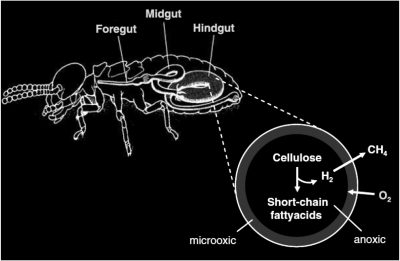
No one microbe in the termite gut can do the job. A whole community of microorganisms is necessary. These microbes belong to three groups, bacteria, archaea and protozoans. Organisms that live with one another for long periods of time are said to live in symbiosis. The symbioses in the termite gut are often beneficial to both partners and so are called a mutualistic relationship. Sometimes neither partner can live without the other, so the relationship is called an obligate symbiosis. The protozoans and the bacteria and archeae that live insided them often depend upon one another and cannot live without each other, so they are an example of an obligate symbiosis. The bacteria and archaea that live inside their partner are also called endosymbionts, “endo-” meaning “within.”
In these photos you can only see the largest microbes, the protozoans. Bacteria and archaea are about a ten times smaller and appear as small specks in these photos. None of these organisms have a color and are largely transparent. To photograph them without using dyes to stain them (which would kill them) we used a special kind of microscope that uses Nomarski optics to distinguish the microbes from the surrounding water. This gives three-dimensional images of the microbes.
Photos courtesy of Daniel Gage, University of Connecticut
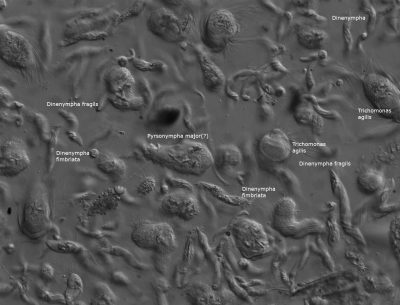
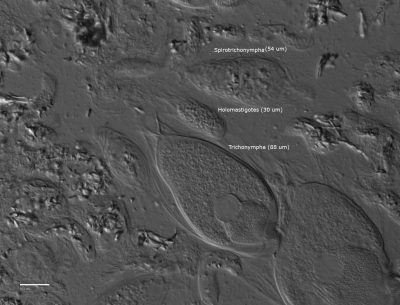
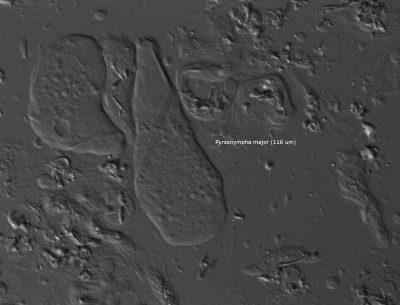

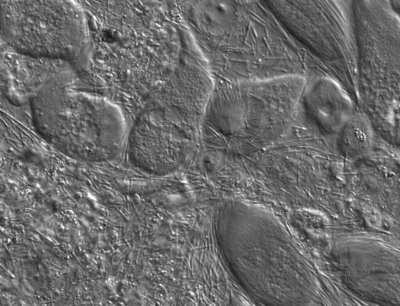
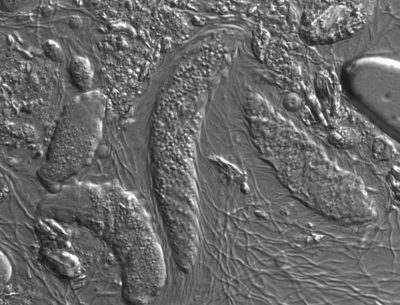
Many of the bacteria in the termite gut live closely associated with the protozoans, sometimes on their surface or inside the protozoan cells. They aid in digestion of food and disposal of waste products. In these photos, the bacteria were stained with a dye that stains DNA so they show up as small white or grey spots. The larger white spots are the nuclei of the protists that contains their chromosomes that are made of DNA.
